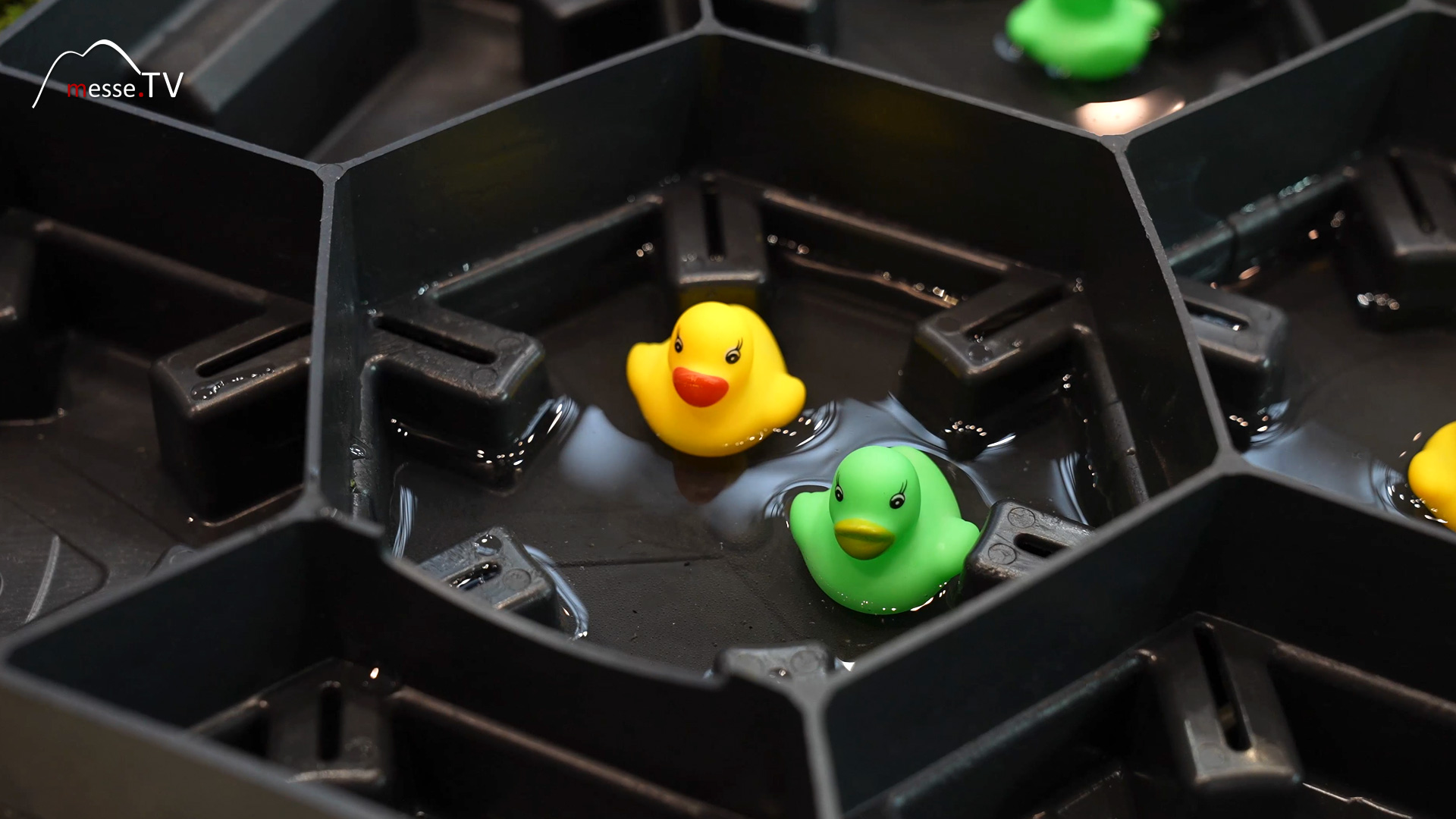PURUS PLASTICS focuses on sustainability in green roofs by using recycled plastic that would otherwise end up as waste. This innovative approach not only reduces the ecological footprint of construction, but also promotes biodiversity and improves the microclimate in urban areas.
Plants are becoming increasingly important as CO2 reservoirs in the face of climate change. They bind large quantities of CO2, which they convert into oxygen with the help of photosynthesis. It makes sense to use plants in places where they have not necessarily been common up to now. For example, for the greening of roofs. At DACH+HOLZ 2024 in Stuttgart, PURUS PLASTICS from northern Bavaria will be demonstrating how this works with a very simple system.
As a recycling company, PURUS PLASTICS GmbH has been producing ground grids made from recycled material for 30 years for sealant-free ground reinforcement of parking lots. With this experience, a green roof system called ECOSEDUM was created from roof boxes. The pre-greened boxes measure 60 x 40 cm and the modules can be laid very easily and quickly in the desired location. Installation requires just one work step: remove the box from the pallet and lay it down. The ingenious design of the box eliminates the need for the usual layered structure for green roofs, as it has an integrated water reservoir that fills up to a marked level and the excess runs off via slits that function like emergency drainage.
Flat roofs and roofs with a maximum pitch of 20 degrees are suitable for green roofs. Roofs with a pitch should not exceed a length of 10 meters and should be appropriately edged, i.e. the parapet must fit and gravel guards must be fitted to prevent slipping. No further installation or shear protection is necessary. There are two versions of the greening box. The light version with 60 kg including water retention per square meter is suitable for use on bus shelters, roofs of bicycle stands and other street furniture, which naturally involve somewhat critical statics. The classic variant with a higher rainwater retention volume and higher weight is suitable for solid construction in a structural design that complies with regulations, such as concrete garages, carport roofs or flat roofs of bungalows. The planting and box are the same for both variants, only the substrate used differs.
Sedum plants are used for greening. One box contains 4 - 6 different species. Depending on the site conditions - sun, shade, etc. - one or other species will prevail. Over the course of the year, the shape and color of the planting undergoes an attractive visual change from summery green to reddish tones in autumn. In spring, the fragile flowers of the sedum species come to the fore. The absolute advantage of the system is its ease of care. The plants are adapted so that they can cope with little water and nutrients. The plants can survive longer periods of heat, but watering in extreme heat is not a problem. There is also no need for mowing or pruning, as sedum remains low-growing. Only foreign growth such as unwanted herbs should be removed once or twice a year. There is no need to worry about maple or beech seeds flying in, as the geometry of the box leaves no room for further development.

